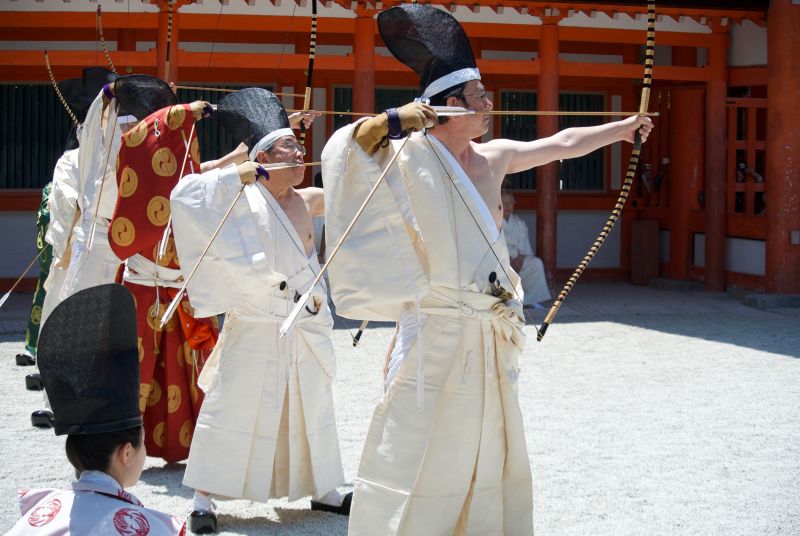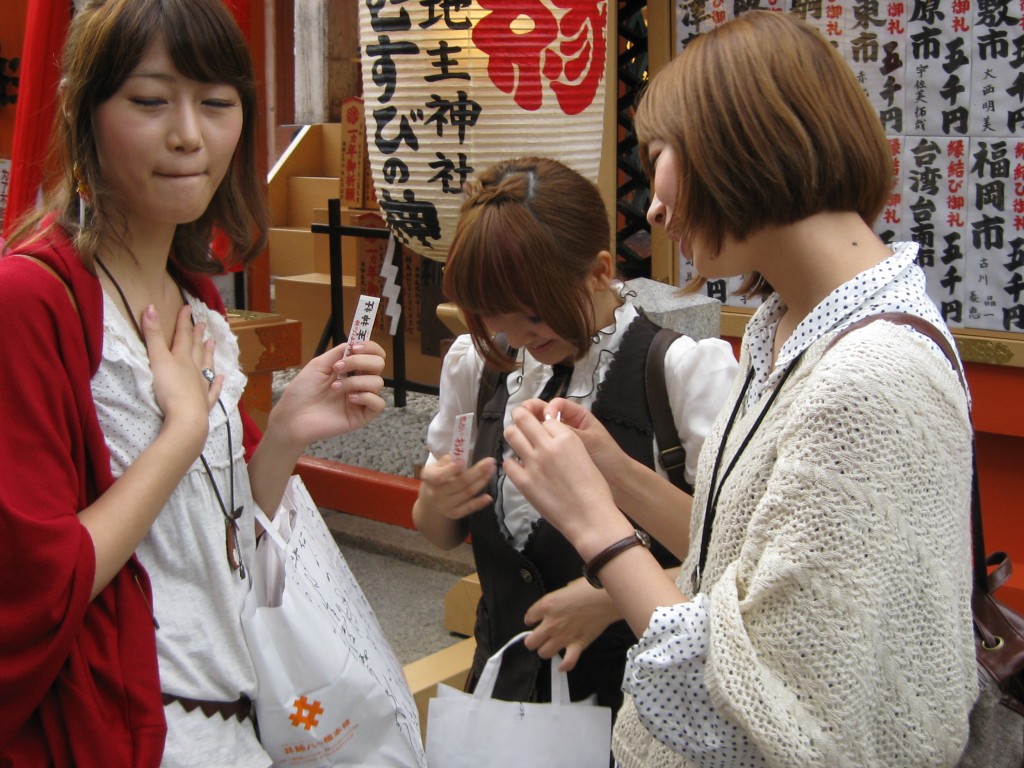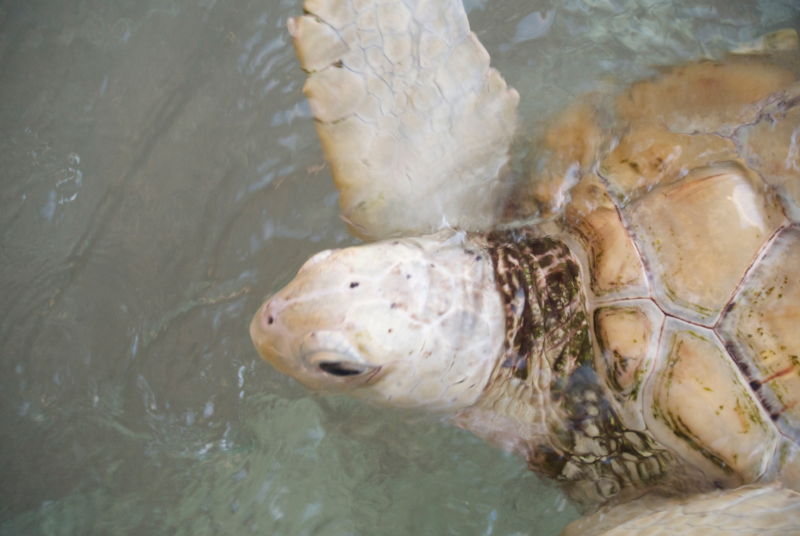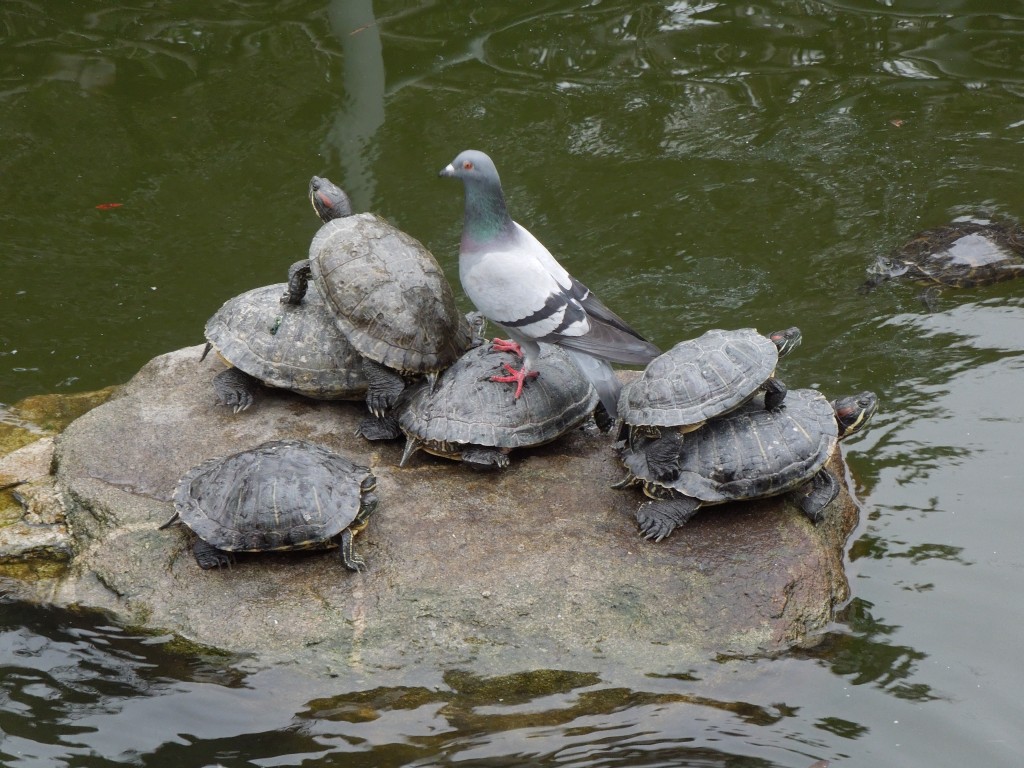Divination is an important part of shamanistic religions. Through the aid of unseen spirits, shamans claim ability to see into the future. In fossilised cases such as Shinto, where shamanistic possession is retained in symbolic form only, omikuji fortune telling at shrines is arranged according to set formula based on Daoism. There are however many other divination techniques in Shinto, some of which are specific to certain shrines. Firing arrows is a common technique.

Shooting arrows at targets is one way of knowing the divine will
In ancient times, however, Shinto practitioners used intuitive techniques based on tortoise shell (and also the shoulder bones of deer). The idea that in such animal parts the divine will could be discerned was imported from China via the Korean kingdom. The practice, known as kiboku, involves heating the shell and interpreting the pattern of cracks that appear, much like reading tea leaves.
News this week has concerned the last remaining use of this ancient divination, in conjunction with the imperial Daijosai rite which will be carried out in the autumn. In the article below, one can see how it has been used to decide the matter of which particular field should be used to supply the rice involved in what is considered Shinto’s supreme ritual.

Omikuji fortune slips are particularly popular with young women
*****************
Turtle-shell divination conducted at Imperial Palace in Tokyo ahead of key succession rite
Kyodo
An imperial divination rite using turtle shells was held Monday to prepare for the most important ceremony to be performed by Emperor Naruhito upon his enthronement.
In the Saiden Tentei no Gi ritual at the Imperial Palace, diviners observed the cracks that appeared when turtle shells were heated in order to select two prefectures — Tochigi and Kyoto — that will supply crops for the upcoming Daijosai offering ceremony in mid-November.
The Daijosai is performed by a new emperor only once during his reign. The emperor will offer newly harvested rice to his imperial ancestors and the deities of heaven and earth, while also eating the rice himself, as well as praying for peace and abundant harvests for the country and its people.
“We are very surprised, but it is an honor that Tochigi rice has been chosen,” an official from the prefecture said.
The Imperial Household Agency said it had prepared the carapaces of three green sea turtles from the Ogasawara island chain in the Pacific, about 1,000 kilometers south of Tokyo, to create eight pieces for the divination rite — held for the first time in 29 years.
While the international trade of green turtles is banned under the Washington Convention, shells of the animals captured with special permission from the Ogasawara island chain were used in the ceremony, according to the agency.
The shells were shaped to measure 24 centimeters in length and 15 cm in width, with a thickness of 1 millimeter. Japanese bird cherry is customarily used as firewood in the rite. Other details of the ceremony, including how the cracks are assessed, are kept a secret.
The imperial household is said to have used turtle-shell divination, originally from China, more often in the past, for purposes such as deciding the dates of other imperial rites.

Ogaswara turtle (all photos by John Dougill)
But currently it is only used to designate the two prefectures that will provide rice for the Daijosai ceremony, according to the agency.
With the artisans who worked on preparing the turtle shells in the wake of the previous era change having either passed away or retired, the role went to Tokyo-based shell craftsman Takao Morita.
“I had to learn through trial and error as it was my first time (making them),” the 68-year-old said.
Morita received a request from the agency around March last year, after Emperor Emeritus Akihito, then emperor, indicated his desire to step down in a rare televised video message citing concern he might not be able to fulfill his official duties due to his advanced age.
Emperor Emeritus Akihito, 85, became the first Japanese monarch to abdicate in 202 years, giving way for his elder son Emperor Naruhito to succeed the Chrysanthemum Throne on May 1 this year.
Morita said he usually handles the shells of hawksbill turtles, which are about 40 cm in size, to manufacture glasses frames and decorative items. But the carapaces delivered to him from the agency were 1 meter long.
It was also his first time processing the bones underneath the shells, rather than the surface of the shells to which he is accustomed.
“It differed from my usual work, but I thought I could do it,” Morita said.
With the agency not giving any specific instructions, he looked through old documents to research the shells. He crafted the bones into elongated pentagons and carefully shaved the pieces with a machine, creating a number of prototypes.

This pigeon clearly feels there is something special about turtle shells
With Morita having to work on the special order at the same time as his usual business, he only fully began processing the shells from this year. He managed to deliver the final pieces to the agency in April amid a growing celebratory mood for the era change, but said he did not feel nervous undertaking the task.
“I worked carefully with each individual piece,” the craftsman said. “Although it was the same day-to-day operation, I felt a weight left my shoulders after they were delivered.”
The previous Saiden Tentei no Gi was held in 1990 after Emperor Emeritus Akihito was enthroned the year before. Akita and Oita prefectures were selected on that occasion.
Imperial rites are generally funded by the imperial family themselves. But the expenses linked to the turtle shells as well as payments for the rice to be harvested are covered by taxpayers as court expenses because they are part of a series of imperial succession events.
Some have questioned the significance of the fortune-telling tradition. “No one in this modern day believes that it can really determine (the prefectures),” wrote the late Shinobu Kobayashi, who served as a chamberlain for Emperor Hirohito, in his diary. Emperor Hirohito is known posthumously as Emperor Showa.
But Kobayashi also wrote that carrying out the traditional rite has a meaning in itself.

Turtle wash basins are a reminder that the amphibious creature held a special place in ancient religion because of its potency. In Hindu and Chinese mythology the cosmic turtle supports the entire world.

Leave a Reply